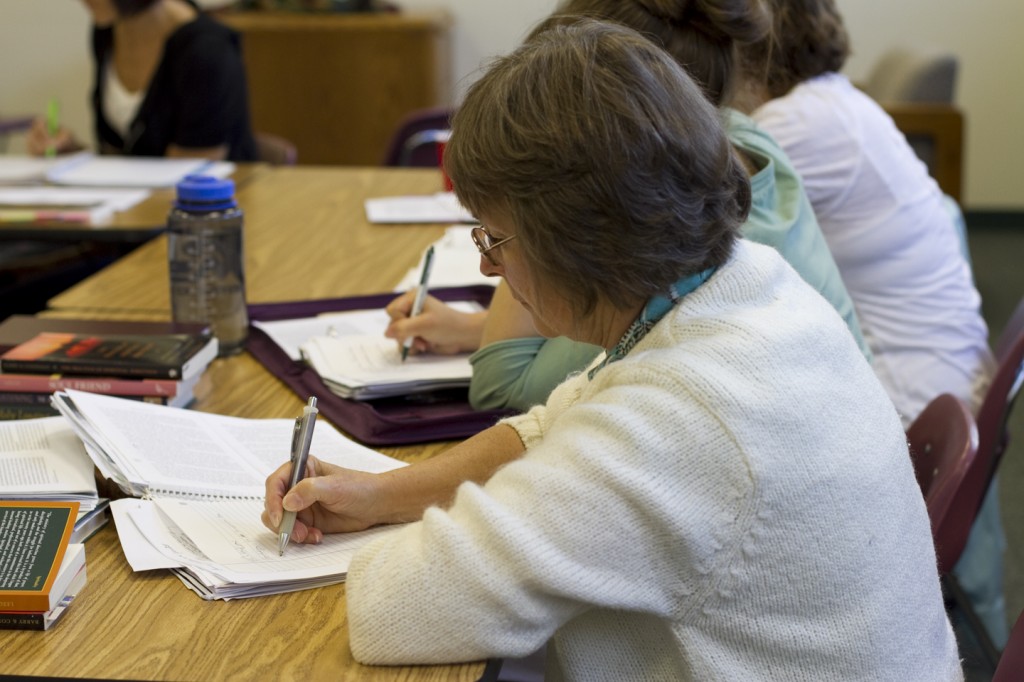Nancy Sims doesn’t hesitate to raise her hand in class at Eastern Mennonite Seminary. She also doesn’t mind taking the lead in small-group discussions.
Sims, a part-time student, looks comfortable jotting down notes and engaging her professors and classmates, even if some are less than half her age.
The 65-year-old social worker from Sugar Grove, W.Va., humbly acknowledges that the classroom is not easy after more than 40 years away, but she isn’t alone. Sims is among the 20 percent of American seminary students older than 50, according to the Association of Theological Schools.
“Seminary’s hard. It’s really hard,” Sims said Tuesday following her Christian Traditions II course. “When you’re older and haven’t been in a study mode for many, many years it complicates it.
“I’m here and still here, clearly, because God called me.”
Don Yoder, EMS co-director of admissions, wasn’t surprised by the 2009 ATS findings, an 8 percent increase from 1995.
Last year, EMS had 47 students 50 and older – accounting for 35 percent of the 132 students in the program.
Yoder noted the significant growth among that demographic in the last decade, as only 20 percent of the students in 2004 were at least 50 years old.
“What I hear from people is everything from, ‘My Sunday school teacher or my religion teacher told me when I was 12 [that] I should be a preacher, and I’ve been running from it ever since,'” he said. “Then at age 52, they say, ‘Maybe, I should go into a ministry.'”
Yoder believes other key motivations for older students include career changes and “simply looking for a place to exercise the brain in an academic setting again.”
Generations Embrace
At 50, Karen Kiel is a tail-end baby boomer with grown children and more time to focus on her calling to the ministry. Kiel lives in Drake Branch, about three hours south of Harrisonburg, but rents an apartment near campus to use during the week.
“I felt a real call in my life to be a part of ministry,” she said. “God is the center of my life and it’s what gives me strength and it’s what gives me purpose.”
Kiel believes it’s good for her to be around the younger students because of the different perspectives they bring.
“The dynamic is healthy,” she said. “They grew up in different ways and different places, maybe even different cultures some of them, and it gives me a different lens to peer through.”
Randy Keener, 26, is a classmate of Kiel and Sims and also enjoys learning with people of different ages for the first time.
“It was actually a surprise for me coming in,” Keener said. “I was actually expecting it to be more younger people, but through just my first year here I’ve already seen the rich benefits in an older generation that brings experiences.
“I’m also a firm believer in inter-generational growth and learning from each other and I’m a strong advocate for mentoring.”
EMS professor Nate Yoder (no relation to Don Yoder) values discussion from the older students as a way to enhance the learning of younger students. Yoder, 55, also focuses on making sure older students are comfortable.
“Sometimes, older students can feel intimidated, especially when it comes to the strictly academic part of the work,” he said. “I try to channel it to what my goal is for my students’ learning. What is it that assists and enhances their learning?”
